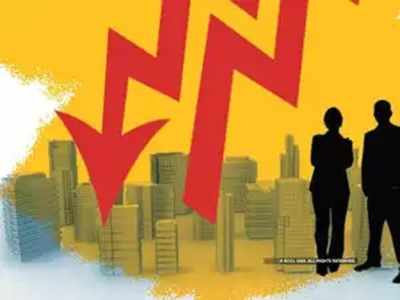
Indian economy slows in March quarter, with worst to come
by Bangalore MirrorIndia's economy grew at 3.1% in the January-March quarter, its slowest pace in at least eight years, and the situation is expected to worsen rapidly, putting pressure on the government and central bank for additional stimulus and a rate cut.
The central bank and rating agencies have warned the worst is yet to come for the economy as the impact of more than two months of COVID-19 lockdown unfolds.
Private economists have predicted a contraction of more than 20% in the April-June quarter and a contraction of up to 5% in the fiscal year that began in April.
Direct fiscal stimulus measures announced this month, mainly to provide subsidised credit and grain to small businesses and migrant workers, are estimated at around 1% of the GDP and will not be sufficient to drive an economic recovery, economists said.
The gross domestic product (GDP) data released on Friday showed consumer spending slowing, private investments and exports contracting in the March quarter. Economists said the figures were likely to be revised downwards as the data collection was affected by the lockdown in late March.
The quarterly figure of 3.1% growth was faster-than the 2.1% consensus in a Reuters poll of analysts, but was below downwardly revised 4.1% rate for the previous quarter.
Rupa Rege Nitsure, group chief economist at L&T Financial Holdings in Mumbai, said it would be a formidable challenge for policymakers to tackle both the health and economic challenges simultaneously in the coming year.
She said the lockdown, and uncertainty about its duration, "will certainly push the country into a deep recession that was not witnessed in several decades".
However, Finance Minister Nirmala Sitharaman said, in an interview to WION TV channel after the data release, that March quarter growth numbers indicated signs of some revival before the coronavirus, while promising to take more measures.
The government has maintained the lockdown ordered in late March though many restrictions were eased for manufacturing, transport and other services from May 18.
The Reserve Bank of India cut policy rates by 40 basis points earlier this month, and has reduced its key repo rate by 115 basis points since February.
'A SLOW GRIND'
The lockdown's full impact on manufacturing and services will become more apparent in the June quarter. Goldman Sachs has predicted a 45% contraction from a year ago, at the high end of estimates.
In the March quarter, private consumption grew 2.8%, down from 6.6% in the previous quarter while capital investment contracted 6.5%, compared to 5.1% fall in the previous three months, government data showed.
Economists expect the fiscal year that began in April will see the worst economic contraction in four decades, and say the economy could contract up to 5%.
India has reported nearly 166,000 coronavirus cases, with 4,706 deaths.
On Friday, the government cut its growth estimate for the fiscal year that ended on March 31 to 4.2% - the lowest in 11 years - from a previously projected 5%.
Several indicators - automobile sales, rail freight, petroleum product consumption, domestic air traffic and imports - indicate a recession in domestic consumption.
India's infrastructure output, comprising nearly 40% of industrial output, contracted 38.1% in April from a year earlier, data released on Friday showed.
Economists warned India will suffer one of the slowest recoveries among major economies.
"The recovery process is likely to be a slow grind and we expect the catch up process to pre-COVID-19 levels to take longer than earlier expected," said Sakshi Gupta, senior economist at private lender HDFC Bank.